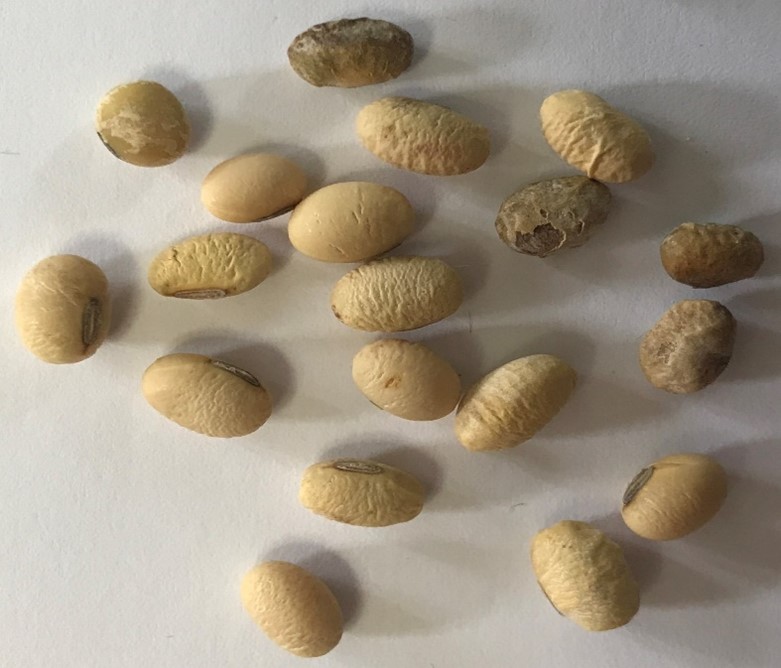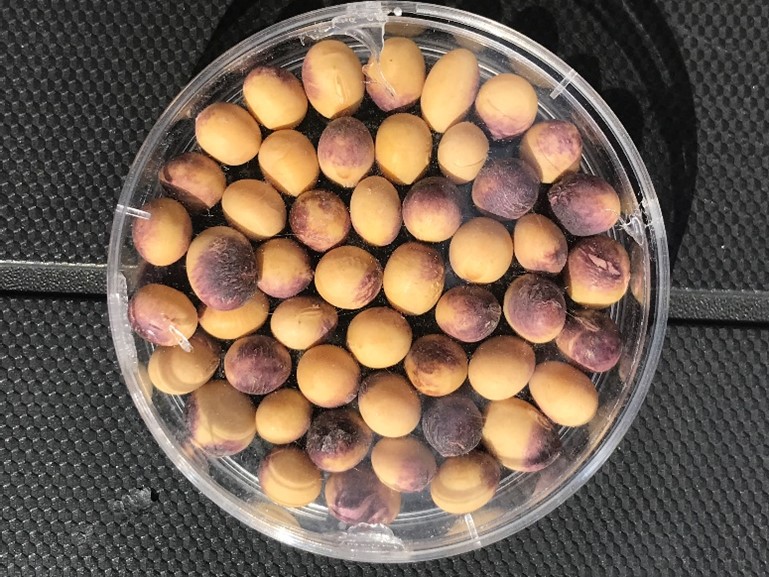Knowing the quality of the seed being planted is critical to establishing a healthy crop. Certified seed is a guarantee of purity and germination standards. The quality of “farm-saved” bin-run seed is not known unless the germination is tested at an accredited seed lab prior to planting, see Factsheet, Ontario Laboratories Offering Custom Seed Germination Testing.
Germination and Vigour
Germination is the main quality consideration used in grading seedlots. Germination can be defined as the ability of a seedlot to produce normal seedlings under favourable conditions, namely 95%-100% humidity at 25ºC. Or, put more simply, the ability of the seed to sprout. Field emergence is reduced compared to lab germination due to various stresses following planting including low temperatures, water stress, seedling diseases, or insect feeding.
A better measure of the seed’s ability to emerge rapidly and uniformly under a wide range of conditions is the vigour test, also known as the stress test. Seed vigour refers to the strength of the seed and is made up of such traits as seed longevity, germination speed, seedling growth, and early stress tolerance. Seed vigour is a measure of a seed’s potential to produce a healthy plant. Various factors influence vigour including genetic factors, environmental conditions, and storage conditions. Time of harvest studies have found that vigour is lost if there is a delay between physiological maturity and harvest. Timely harvest is important for soybeans grown for seed. Certified seed standards require that seed only be tested for germination, but in addition to germination some seed distributors test seed vigour.
Figure 1, The Relationship between Seed Vigour, Viability, and Deterioration, illustrates the relationship between germination and vigour. As seed deterioration increases, germination drops slowly, whereas vigour drops more rapidly. With Lot A, deterioration is minimal, and germination and vigour are similar. Conversely, Lot B exhibits excellent gemination but low vigour.

Figure 1, The Relationship between Seed Vigour, Viability, and Deterioration, illustrates the relationship between germination and vigour.
When storing seed, two of the most important factors are seed moisture and storage temperature. The drier the seeds at time of storage, the longer they can be stored. For seed stored over one winter the moisture should be 13 percent or less. For long term storage, soybean seed should be dried to 10 – 11 percent moisture. It must also be kept cool. Ideally, seed should be kept below 13 degrees C.
There are numerous factors that can impact seed quality. Physical factors include mechanical damage (cracks) to the seed coat and environmental stresses
that result in small seed size, thin seed coats, or discoloured seed. Seed diseases can also reduce germination and vigour of seedlots. Some of these diseases will infect subsequent soybean crops. In wet years when harvest is delayed one of the most common seed diseases in Ontario is phomopsis seed decay, see figure 2, Phomopsis Seed Decay. Another, more regional problem is purple seed stain, see figure 3, Purple Seed Stain. It is important to always plant clean seed to establish a uniform and healthy crop.

Figure 2. Phomopsis seed decay on soybeans.

Figure 3. Purple seed stain on soybeans.
References
- Delouche and Caldwell, 1960